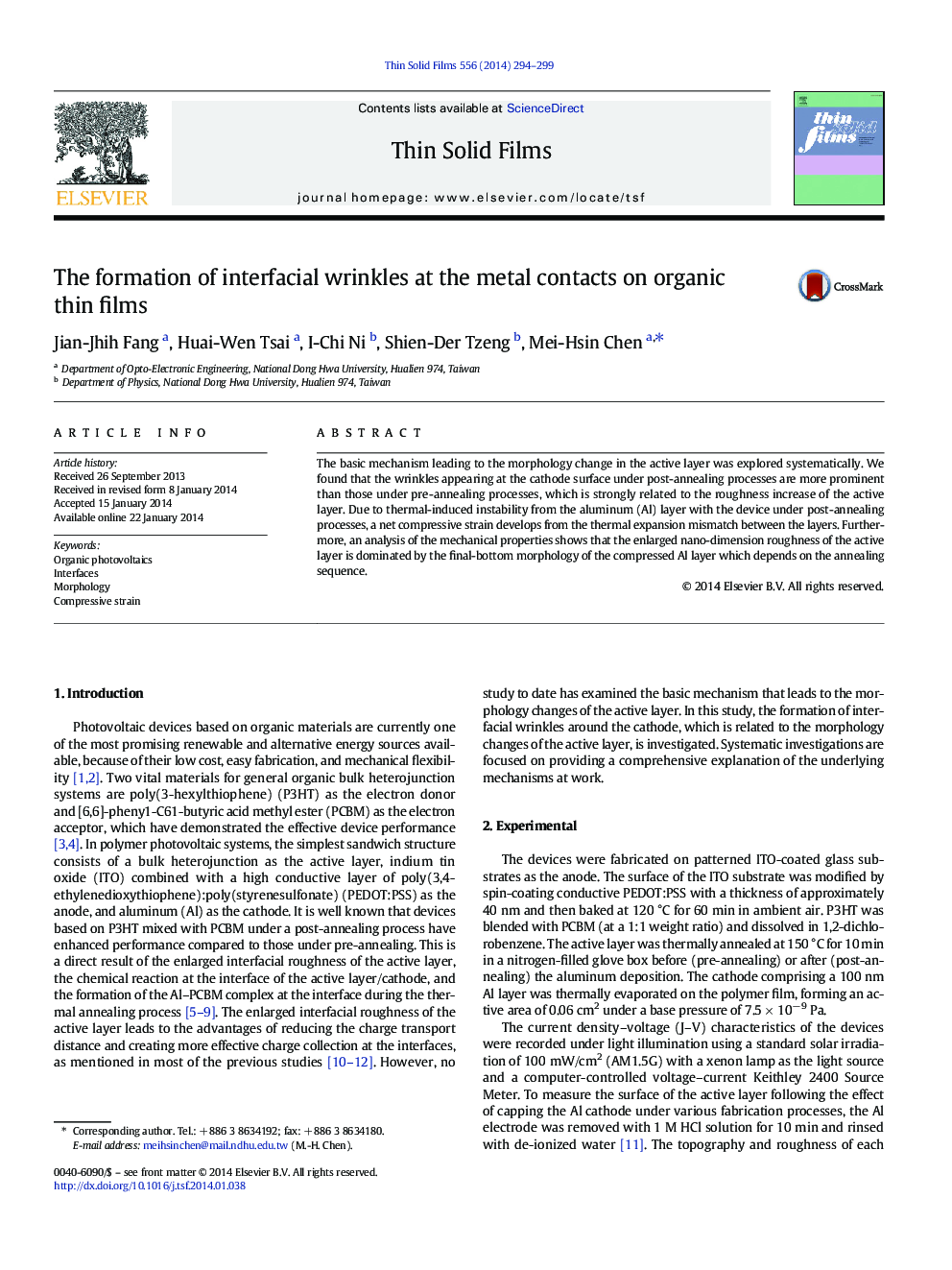| Article ID | Journal | Published Year | Pages | File Type |
|---|---|---|---|---|
| 8035199 | Thin Solid Films | 2014 | 6 Pages |
Abstract
The basic mechanism leading to the morphology change in the active layer was explored systematically. We found that the wrinkles appearing at the cathode surface under post-annealing processes are more prominent than those under pre-annealing processes, which is strongly related to the roughness increase of the active layer. Due to thermal-induced instability from the aluminum (Al) layer with the device under post-annealing processes, a net compressive strain develops from the thermal expansion mismatch between the layers. Furthermore, an analysis of the mechanical properties shows that the enlarged nano-dimension roughness of the active layer is dominated by the final-bottom morphology of the compressed Al layer which depends on the annealing sequence.
Related Topics
Physical Sciences and Engineering
Materials Science
Nanotechnology
Authors
Jian-Jhih Fang, Huai-Wen Tsai, I-Chi Ni, Shien-Der Tzeng, Mei-Hsin Chen,
